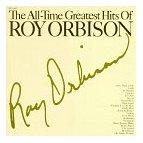Steve Hoffman Outdoes Himself With a New Roy's All Time Greatest Hits
Maybe you kicked yourself for not buying Steve Hoffman’s outstanding re-mastering of The All Tme Greatest Hits of Roy Oribison issued by DCC Compact Classics almost a decade ago. Maybe you didn’t have a turntable back then. Or maybe you have a copy of that limited edition release and you think it is now gaining value.It's not, now that this edition is about to be released.
Here’s the news: Hoffman’s new re-master for S&P Records cut at AcousTech mastering with Kevin Gray sounds much better than the DCC Compact Classics reissue.
Some audiophiles don’t understand that a mastering chain is simply a hi-fi system in reverse and that just as a hi-fi system can be easily improved—or at least made to sound radically different by changing components—the same is true of a mastering chain.
The mastering system at AcousTech is quite obviously far superior to what was available to Gray and Hoffman at Future Disc—good though that system was. That’s been clear for quite some time, based on the many outstanding sounding discs cut at the newer facility. With this reissue a direct “A/B” comparison is possible. Cut by cut, S&P’s new issue offers more of the richness, liquidity and three-dimensionality of the original records. More significantly, this new reissue is far more harmonically complete. The DCC Compact Classic reissue, good as it was, sounds almost “black and white” by comparison, and it has a slight edginess that is totally missing from this new mastering.
Of course, no hits compilation can be cut from master tapes, since azimuths differ cut by cut and it is impossible to compensate for such differences in real time—even if a record label is willing to allow assembled original albums to be taken apart and re-edited (which few if any are). So Hoffman told me he had flat 15 IPS 1/4" transfers made of each cut from the stereo masters in order to assemble the four sides of the two disc set. Whatever losses might have occurred in the transfer, such as added tape hiss, are extremely difficult to discern. Direct comparisons with individual cuts here, and on Classic’s full album reissues cut from the original tapes does show a slight softening here, but such comparisons are tricky since different mastering chains are involved. Some listeners may find this compilation perfectly rich and full and the Classic titles a bit bright. Others will find the Classic reissues brilliantly detailed and this somewhat mellow and soft. I report, you decide.
At this point, is a discussion of Roy Orbison’s powerful, magical, quasi-operatic voice, his innovative arrangements, and the engineering genius of Bill Porter necessary? I don’t think so. These recordings, made between 1959 and 1963—a magical period of time musically and sonically—though occasionally kitschy, easily stand the test of time. Orbison’s three minute mini-epics like “Running Scared,” “Crying,” “Leah,” “Blue Bayou,” and “Pretty Woman,” deliver potent emotional punches every spin, with the singer’s vocal feats eliciting hair-raising chills with every play. I was lucky enough to see Orbison numerous times before his untimely demise, and he managed to hit those impossibly high notes every time, seemingly with ease, and every time the audience literally went crazy!
Bill Porter’s recording brilliance, accomplished under difficult conditions, will be apparent to anyone reading this who may be unfamiliar with his achievements. The sound he produced is, appropriately enough, monumental: full frequency range and dizzying dynamics. This level of transparency, dynamics and three-dimensionality is almost never heard on contemporary recordings. While the DCC Compact Classics reissue easily beat the original CBS/Monument original compilation, this new S&P mastering is far better. Orbison fanatics will want the original Classic reissues—especially the original mono mixes—but for those interested in just the hits, this set has them all.
These songs, arrangements and recordings define the word “classic” when it comes to popular music of a given period. There are saccharine strings, there are background singers uttering nonsense syllables, and there are some corny, “bouncy” rhythms, and while these elements are no more contemporary than are tail fins on cars, all of them (including tail fins) remain enjoyable and enticing. Highly recommended!



